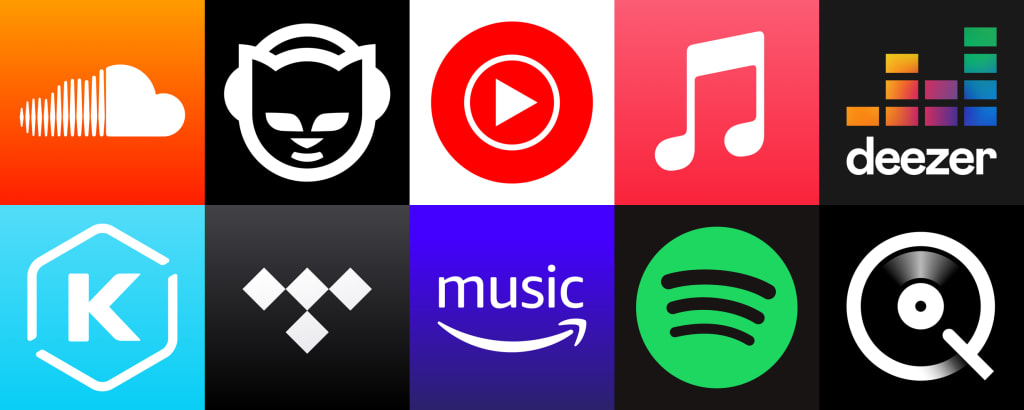The Science of Music Streaming: Understanding the Mechanics
Understanding the Mechanics

Music streaming has revolutionized the way we access and enjoy music. With just a few taps, we can explore vast libraries of songs from all over the world. But have you ever wondered how this seemingly magical technology works? In this deep dive, we’ll explore the mechanics of music streaming, the key players involved, and the impact it has on the music industry. By understanding the technology and processes behind music streaming, we can better appreciate the convenience and innovation it offers.
The Fundamentals of Music Streaming
At its simplest, music streaming involves delivering audio content to a user’s device over the internet. This process is designed to be instantaneous, allowing users to listen to music without needing to download files. Streaming services offer a vast array of songs, albums, and playlists that users can access on demand.
The Streaming Workflow
The workflow of music streaming involves several key steps:
User Request: The user selects a song from the streaming platform’s library.
Server Response: The platform’s server retrieves the audio file and sends it to the user’s device.
Buffering and Playback: The audio file is buffered to prevent interruptions, then decoded and played on the user’s device.
Essential Technologies
Several technologies work together to facilitate music streaming:
Content Delivery Networks (CDNs): CDNs ensure that audio files are delivered quickly and efficiently by storing copies of the files in multiple locations. This reduces latency and improves the overall streaming experience.
Compression Algorithms: These algorithms reduce the size of audio files, making them easier to stream without compromising quality. Common codecs include MP3, AAC, and Ogg Vorbis.
Streaming Protocols: Protocols like HTTP Live Streaming (HLS) and Dynamic Adaptive Streaming over HTTP (DASH) manage the delivery of audio data to ensure smooth playback.
Servers and Data Centers
Streaming services rely on powerful servers housed in data centers around the world. These servers store the vast libraries of music and handle millions of requests simultaneously. When a user selects a song, the request is sent to the server, which retrieves the audio file and delivers it to the user’s device.
Licensing and Rights Management
Music streaming platforms must navigate a complex landscape of licensing and rights management to legally stream music. This involves securing licenses from record labels, music publishers, and artists. These licenses dictate how royalties are calculated and distributed, often based on the number of streams a song receives.
Master Use License: Allows the streaming service to use the recorded version of a song.
Mechanical License: Covers the reproduction of the song's composition.
Public Performance License: Permits the public streaming of the song.
Royalties are typically divided among several parties: the recording artist, the songwriter, the record label, and the music publisher. The exact breakdown varies depending on the contracts in place, but it often leads to a relatively small amount per stream for the artist. This has led to ongoing debates about fair compensation in the streaming era.
Personalized User Experience
A key feature of modern music streaming services is their ability to provide personalized listening experiences. This is achieved through:
User Data Analysis: Streaming platforms collect and analyze data on user listening habits, including song preferences, frequency of listening, and skip rates. This data is used to understand user preferences and behavior.
Recommendation Algorithms: Using machine learning algorithms, these platforms can suggest songs, albums, and playlists tailored to individual user tastes. These algorithms consider various factors such as genre preferences, favorite artists, and listening history.
Collaborative Filtering: This technique compares the listening habits of different users to recommend songs that similar users enjoy.
By leveraging these technologies, streaming platforms can offer a highly tailored listening experience, keeping users engaged and satisfied.
The Economics of Music Streaming
The economics of music streaming is complex, involving revenue sharing between streaming services, artists, and rights holders. While streaming has provided new opportunities for exposure, many artists feel that the compensation per stream is inadequate, sparking ongoing debates about fair pay in the digital age.
Per-Stream Revenue: The amount an artist earns per stream varies widely between platforms and is often a fraction of a cent.
Revenue Sharing: Streaming services usually retain a significant portion of the revenue to cover their operational costs, with the remainder distributed among rights holders.
Advocacy for Fair Pay: Many artists and industry organizations are advocating for higher per-stream payouts and more transparent royalty distribution.
Despite these challenges, streaming has also provided unprecedented opportunities for independent artists to distribute their music without the need for traditional record label deals.
The Impact on the Music Industry
Music streaming has had a profound impact on the music industry, providing new opportunities for artists to reach audiences worldwide. However, it has also raised questions about fair compensation. Many artists feel that the revenue generated from streams is insufficient, leading to ongoing discussions about improving royalty rates and payment models.
Increased Accessibility: Streaming platforms have made it easier for listeners to access a wide variety of music from different genres and cultures.
New Opportunities for Artists: Independent artists can now distribute their music directly to listeners, bypassing traditional gatekeepers like record labels.
Shift in Revenue Models: The industry has moved from a sales-based model to a streaming-based model, with revenue generated from continuous access rather than one-time purchases.
These changes have reshaped the music industry, creating both opportunities and challenges for artists and stakeholders.
Future Directions
The future of music streaming is likely to be shaped by several trends and innovations:
High-Resolution Audio: As technology advances, more services are offering high-resolution audio for a superior listening experience. Audiophiles can now enjoy studio-quality sound through streaming platforms.
Enhanced User Interaction: Features like social sharing, collaborative playlists, and live streaming are becoming more common, enhancing user engagement and creating new ways for fans to interact with artists.
AI and Machine Learning: Continued advancements in AI will further refine personalized recommendations and discoverability features. AI can also be used to analyze trends and predict future hits.
Voice Control and Integration: Integration with smart devices and voice assistants is making it easier for users to access their music hands-free. This trend is expected to continue, with more advanced voice recognition and control features being developed.
These trends indicate that music streaming will continue to evolve, offering new ways for listeners to engage with their favorite artists and discover new music.
Music streaming has fundamentally changed how we discover, listen to, and share music. By understanding the technology behind it, we gain a deeper appreciation for the convenience and innovation it brings. However, as the industry continues to evolve, it will be essential to address the economic challenges faced by artists to ensure a sustainable future for music creation and distribution.
How do you think music streaming can be improved to benefit both listeners and artists? Share your ideas and join the conversation in the comments below!
About the Creator
Music Industry Updates
Welcome to Music Industry Updates, your go-to hub for the latest happenings in the music world.
Stay tuned, stay informed, and stay inspired with Music Pulse – where every beat counts.
Enjoyed the story? Support the Creator.
Subscribe for free to receive all their stories in your feed. You could also pledge your support or give them a one-off tip, letting them know you appreciate their work.






Comments
There are no comments for this story
Be the first to respond and start the conversation.